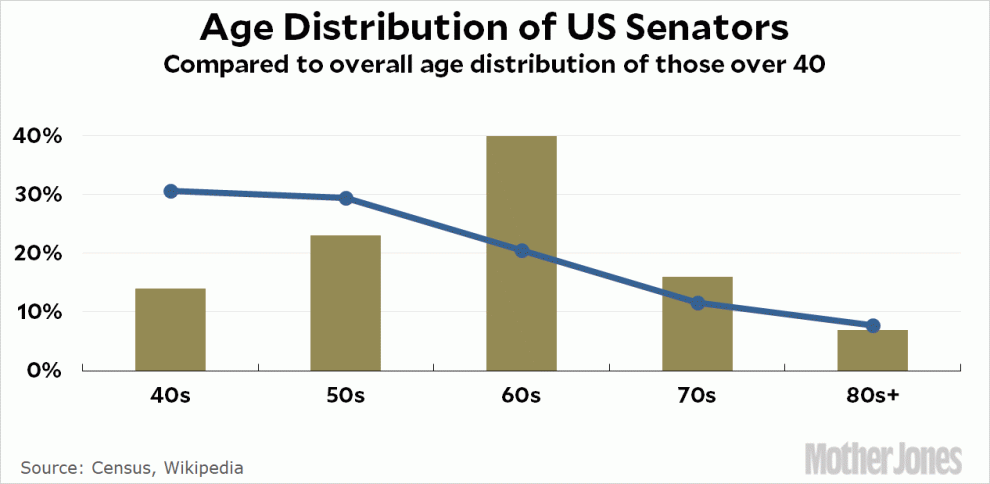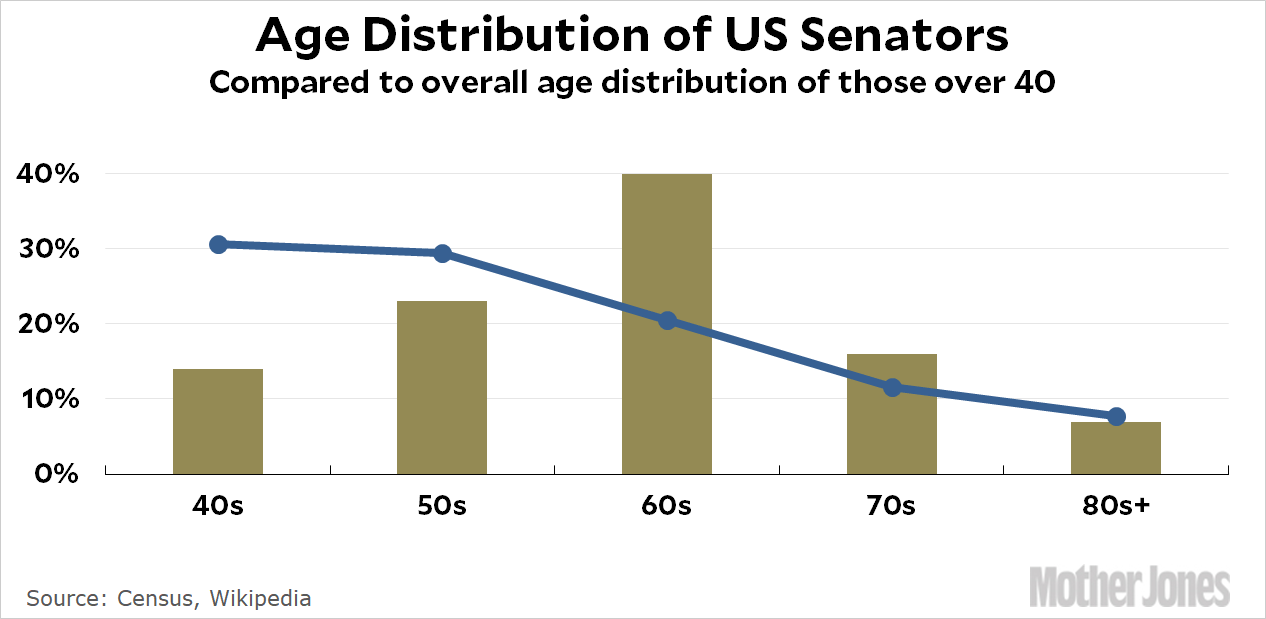
Over at Vox, Harold Pollack writes about a problem: “very old politicians.” I was nodding along until I got to this sentence about the Senate:
In the body as a whole, 23 senators are at least 70. Seven are 80 or older.
This doesn’t seem all that old. So I got curious: how does the age distribution of the Senate compare to the country as a whole? Obviously there are no youngsters in the Senate, so we need to compare to a subset of the population. It’s very seldom that anyone becomes a senator before age 40, so here’s a comparison of the US Senate to the overall US population 40 and over:

It turns out the Senate looks a lot like America. The main difference is too few senators in their 40s and too many in their 60s. But the 70+ crowd is roughly the same as their distribution in the population.
Now, in the rest of the world, most of those folks who are over 70 are retired, and maybe a lot of these senators should be too. Still, they don’t look an awful lot different than a random group of over-40s plucked off a street corner.















